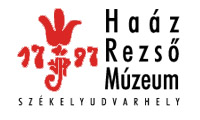Kovács Petronella (szerk.): Isis - Erdélyi magyar restaurátor füzetek 1. (Székelyudvarhely, 2001)
T. Bruder Katalin: Kerámiarestaurálás I.
crepeline can be used for conservation, and certainly not polyamide or other nylon-like fabrics or fibres. The basic theory says that the thread used for sewing should possibly be weaker than the material we wish to sew. No direct colours should be used or ones that are of poorer quality than the one originally used on the art objects, since they reduce the possibility of a later treatment. It is suggested to protect the painted parts before washing in the alcoholic solution of poly(vinylbutiro-acetate) (Regnal). Lining foils can be made from the 1:1:5 mixture of Mowilith DMC2, Mowilith DM5 and water, which is to be mounted on a moist crepeline stretched on a table that was earlier coated by polypropylene foil. After drying, the adhesive surface develops on the side of the crepeline that is contacted with the polypropylene foil. This foil can be ironed to the art object through siliceous paper. If the doubled fabric needs to be dismantled, the object must be placed on blotting paper and one must wait until the two layers separate without intervention. Flag must be stored horizontally. The ones with a single facet that are not doubled, not painted and do not have inlays can be stored rolled up if there is no possibility to keep them horizontally. Lined fabrics must not be rolled up. Györk Mátéfy Textile and paper restorer artist Magyar Nemzeti Múzeum Katalin OROSZ Storage, exhibition and conservation of ethnographic leather objects Leather has always been regarded as a useful and valuable material, and people tried to dress the skins of a great variety of animals and use them for different purposes. In Europe, however, the skin of cattle, sheep, goat and pig was most frequently used. Cowhide was used first of all for shoe soles, harness and cart gear, while calf-skin, having a softer surface, was the raw material of shoe uppers, upholstery and book bindings. Pigskin is very strong and accordingly it was preferred for the binding of large archives volumes subjected to strong wear. Sheepskin, feeling softer by the hand, served mainly for the raw material of articles of wear and book bindings. Goatskin was used where durability was just as important as aesthetic appearance, e.g. for shoe uppers, book bindings, coating of cases and boxes and for mounting. Rawhide is perishable, it is attacked by microorganisms, it stiffens after drying and shrinks in cause of heat. So rawhide is to be conserved and stored until the sufficient quantity is collected. Two methods have been used for this purpose: salting and drying. The next steps of tanning are soaking, liming, scudding, decalcification, drenching, tanning, dehydration, colouring, greasing then surface treatment, softening. Vegetable tanning was most common in Europe, when tannic acid gained from various plant parts were used. In the Carpathian Basin, the most frequently used vegetable tanning substance was gained from the bark and the apple of robur. Besides, mineral tanning with alum was significant since the white leather objects in ethnographic collections ("suba", "melles", bagpipe, tobacco pouch) were tanned with alum until the recent past. Aluminous leather is soft and one must be careful during its treatment, since alum is not strongly bound to the fibres and it can easily be removed during soaking in water. The Hungarian way of skin dressing arrived in France in the 16th century and was given the name hongroyeurs. Tanning with grease was widespread in Central Asia, in the Far East and in areas of cold climate. Glaced tanning is the combination of aluminous and grease tanning. Smoke tanning is an ancient method. Chrome tanning and the use of artificial tanning substances are the most common methods in modern industry. The deterioration of leather objects can originate from the dressing or the use of the objects and environmental factors. Objects made of leather usually have complex materials, they can contain metal, textile, wood or glass beside leather. At storage, the environment must be adjusted to the demands of the organic components. Leather objects must be kept in boxes protected from light and dust. To prevent insect contamination it is suggested to use insect repellents. Occasional insect contamination can be detected by insect traps available in commercial circulation. The mechanic dry cleaning of the contaminated leather objects can be made with a brush, a vacuum cleaner or rubbers of various hardness. Furs, objects combined with textile can nicely be cleaned with sawdust or bran saturated with white spirit. Leather of vegetable tanning can also be cleaned with fat liqours and those of solvents. It is worth moistening the hardened leather objects in vapour chambers to help the correction of the shape. An ultrasonic vaporiser is the most suitable, although, if it cannot be obtained, leather can also be moistened on a piece of blotting paper placed over the dish of cold water. The sufficiently soft leather must be set to the right shape and slowly dried wrapped up in paper wadding. The shrinking of the leather can be prevented by stretching it with the help of rustproof insect pins. Some objects were greased during use. Too much grease hardens the leather and cracks the grain. To protect the object, the superfluous grease must be removed with a wrapping saturated in white spirit. Katalin Orosz Paper and leather restorer artist Magyar Országos Levéltár 97
